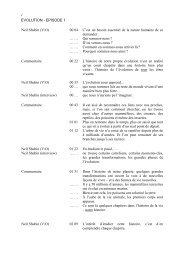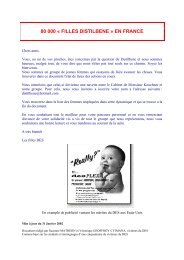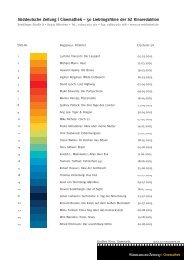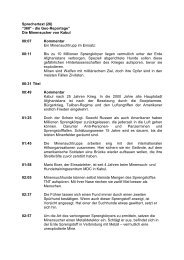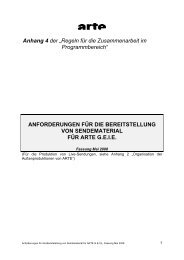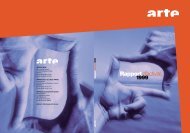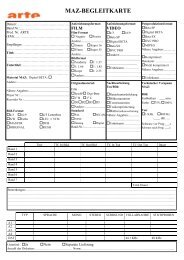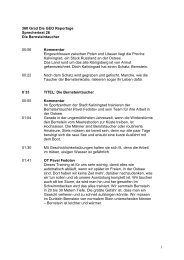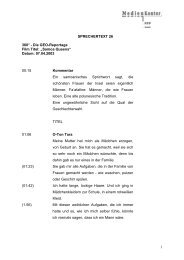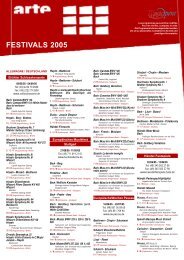POPs IN AFRICA HAZARDOUS WASTE TRADE 1980 - 2000 ... - Arte
POPs IN AFRICA HAZARDOUS WASTE TRADE 1980 - 2000 ... - Arte
POPs IN AFRICA HAZARDOUS WASTE TRADE 1980 - 2000 ... - Arte
You also want an ePaper? Increase the reach of your titles
YUMPU automatically turns print PDFs into web optimized ePapers that Google loves.
SUDAN<br />
BASEL LOMÉ IV / COTONOU BAMAKO<br />
Party Ratified / Party to<br />
National Policy: The country of Sudan, as a party to the Lomé Convention, totally<br />
bans waste shipments to its territory.<br />
Waste Import Schemes: Scheme: U.S. Incinerator Ash<br />
Date: 1988<br />
Type of Waste: “Non-hazardous” Incinerator Ash<br />
Source: U.S.<br />
Exporter: Columbia Materials Exchange Corporation<br />
Pretext/Fate: Glass Manufacturing, Road Bed Construction, Soil<br />
Building<br />
Status: Rejected<br />
On April 20, 1988, the government of Sudan was offered<br />
$25,000,000 to $350,000,000 per year in exchange for accepting<br />
millions of tons of “non- hazardous” incinerator ash from the<br />
U.S. The scheme was initiated by Eugene Rane of a U.S. firm,<br />
Columbia Materials Exchange Corporation. Rane suggested that<br />
Sudan use the ash for making glass, in road bed construction, as a<br />
soil builder or as the nutrient base for deep rooted grasses. The<br />
proposal was quickly rejected by the Sudanese government. 208<br />
Obsolete Pesticides: In Sudan there are altogether 666 tonnes of obsolete pesticides<br />
stored in about 30 different locations.<br />
The following substances were identified, among others: DDT,<br />
Lindane, Parathion, Toxaphene and large quantities of Methyl<br />
bromide.<br />
Countries of origin named are: Denmark, Egypt, Germany,<br />
France, Greece, Italy, Japan, Netherlands (“Holland“),<br />
Switzerland, UK, USA.<br />
Companies identified are: Bayer, Ciba Geigy, Cyanamid, Dow<br />
Elanco, Sandoz, Shell, Sumitomo. 209<br />
FAO also mentions 17,375 tonnes from Germany (BAYER) and<br />
5,946 tonnes from Switzerland (1999).<br />
An explanation for this inconsistency seems to be that the bulk of<br />
the waste was redeclared usable after expiry date:<br />
“Organised by the local industry association (SAGA), the<br />
Sudanese government held a meeting in May 1998 at which an<br />
action plan was drawn up. FAO agreed to update the product<br />
inventory, and the industry funded analyses confirming that a<br />
number of stocks were still usable. Some of these products have<br />
subsequently been applied to crops. In the meantime, the<br />
Government has been seeking financial assistance for the<br />
disposal of the remaining stocks believed to amount to about 600<br />
208 Proposal submitted to Sudan’s Minister of Finance and Economy from Eugene Rane, President of Columbia Material Exchange Corporation, April 20, 1988.<br />
209 FAO 1999, 2001<br />
107



